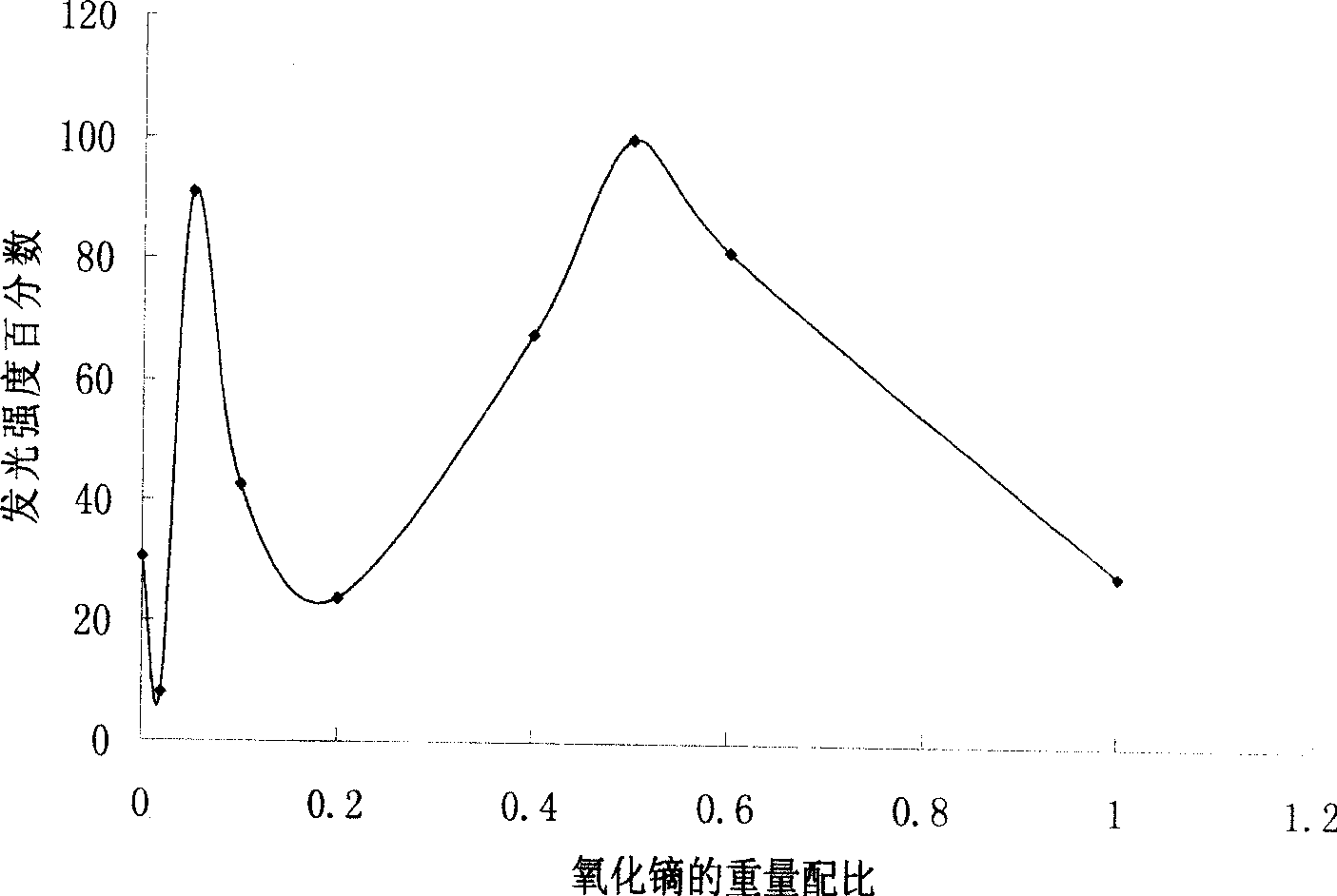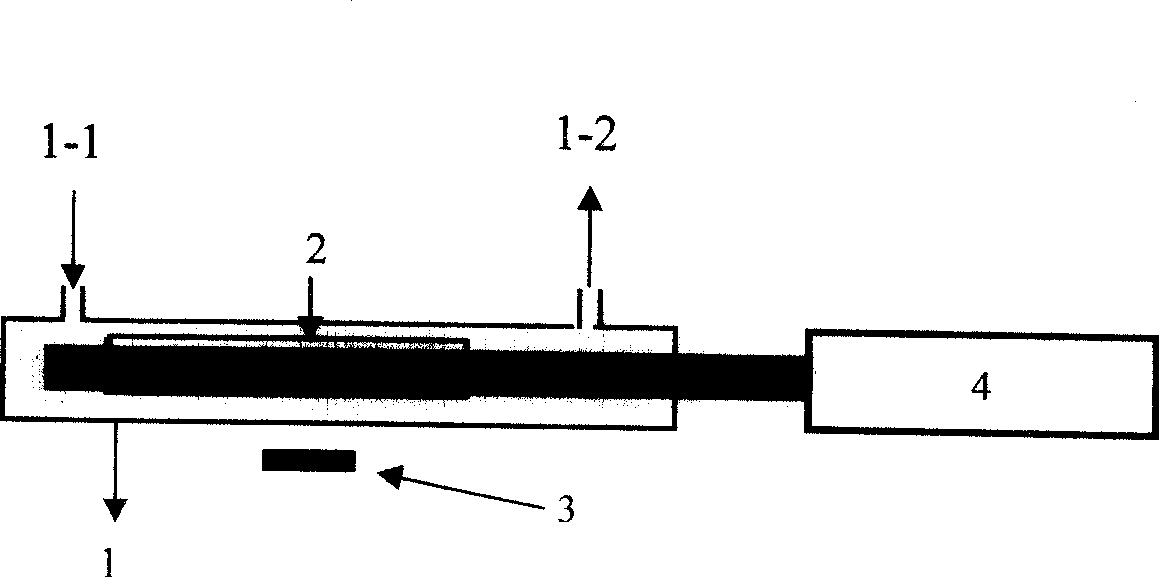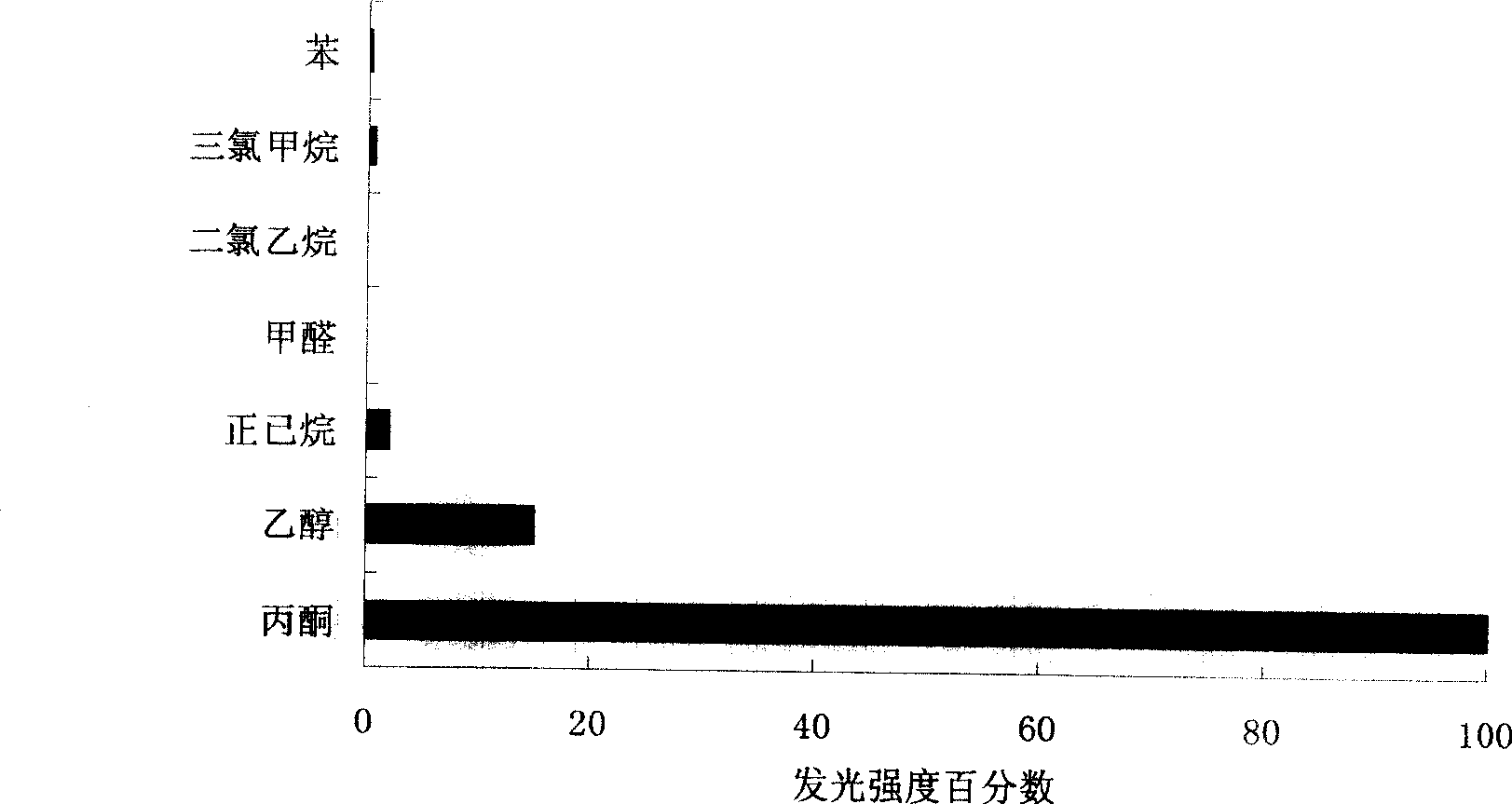Novel nano strontium carbonate base acetone sensitive material
A strontium carbonate-based, sensitive material technology, applied in the direction of analysis, chemiluminescence/bioluminescence, etc. by chemical reaction of the material, can solve the problems of poor acetone selectivity and poor anti-interference performance, and achieve good selectivity, Fast response and high sensitivity effects
- Summary
- Abstract
- Description
- Claims
- Application Information
AI Technical Summary
Problems solved by technology
Method used
Image
Examples
example 1
[0028] Weigh 1 part of strontium carbonate nanopowder and 0.5 part of dysprosium oxide powder according to the weight ratio, put them in a container, add distilled water and stir them into a thin paste, mix them well and put them in a drying oven at 110°C for 1 hour to dry, then place Treat it in a muffle furnace at 500°C for 1 hour, take it out and cool it, and grind it thoroughly. During heat treatment in the muffle furnace, do not close the door of the muffle furnace, and leave a gap in the door to ensure that there is sufficient oxygen in the furnace to remove residual organic matter in the material.
example 2
[0030] Weigh 1 part of strontium carbonate nanopowder and 0.02 part of dysprosium oxide powder according to the weight ratio, put them in a container, add distilled water and stir them into a thin paste, mix them well and put them in a drying oven at 110 ° C for 1 hour, then dry them in a Heat treatment in a muffle furnace at 450°C for 1 hour in an aerobic atmosphere, take it out and cool it down and grind it thoroughly. Other operating methods are the same as Example 1.
example 3
[0032] Weigh 1 part of strontium carbonate nanopowder and 0.05 part of dysprosium oxide powder according to the weight ratio, put them in a container, add distilled water and stir into a thin paste, mix well and put them in a drying oven at 110°C for 1 hour, then place Treat it in a muffle furnace at 550°C for 1 hour, take it out and cool it, and grind it thoroughly. Other operating methods are the same as Example 1.
PUM
 Login to View More
Login to View More Abstract
Description
Claims
Application Information
 Login to View More
Login to View More - R&D
- Intellectual Property
- Life Sciences
- Materials
- Tech Scout
- Unparalleled Data Quality
- Higher Quality Content
- 60% Fewer Hallucinations
Browse by: Latest US Patents, China's latest patents, Technical Efficacy Thesaurus, Application Domain, Technology Topic, Popular Technical Reports.
© 2025 PatSnap. All rights reserved.Legal|Privacy policy|Modern Slavery Act Transparency Statement|Sitemap|About US| Contact US: help@patsnap.com



